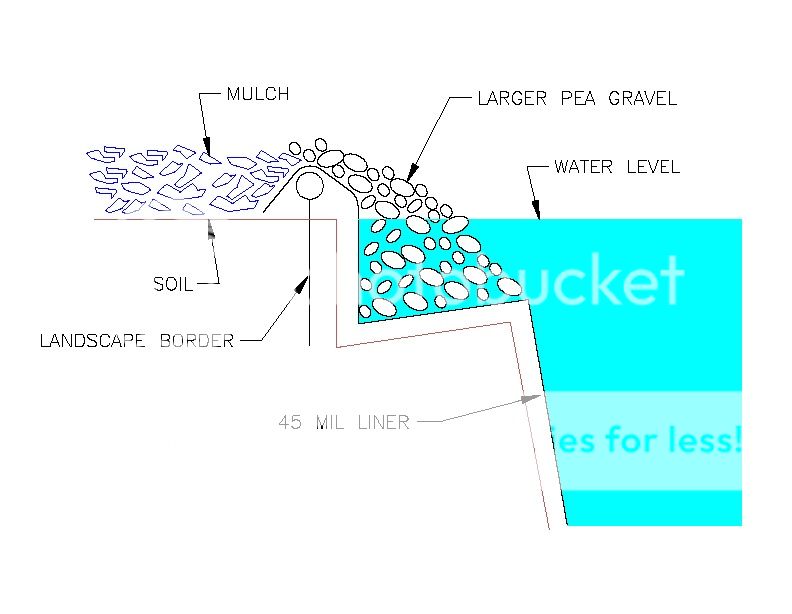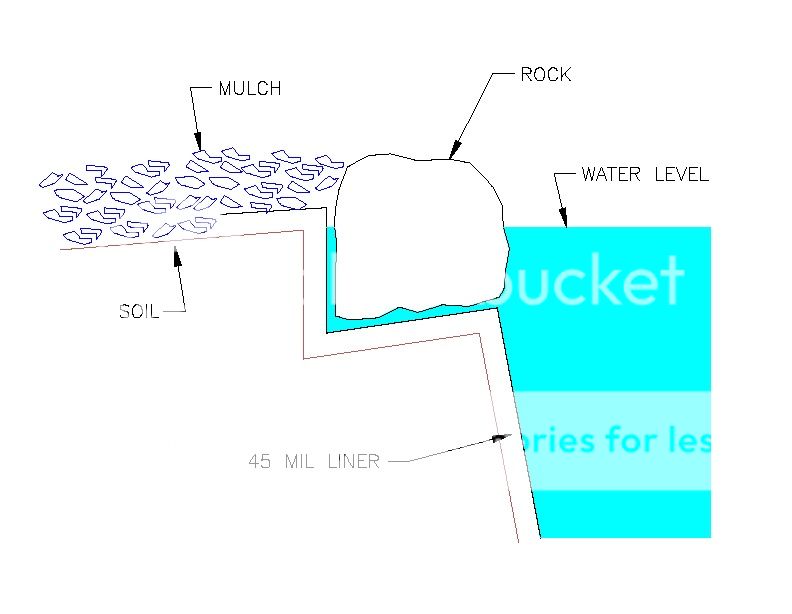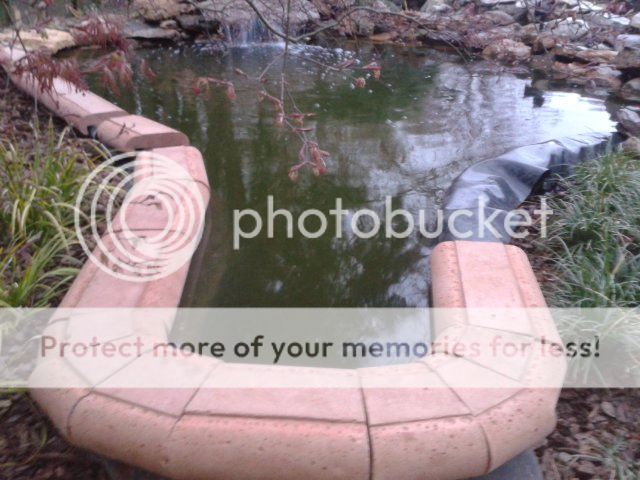capewind said:
Excuse me WB, but I have to ask a really stupid question here. I understand/accept that there are a lot of ways to do something, but this statement makes absolutely no sense to me. Blocks would make a more solid top, but to say using blocks will make it easy to make it perfectly level isnt true, or I cant see HOW it would be true. Block or no block, the dirt would need to be LEVEL ... if the dirt wasnt compact and level before laying the blocks, the blocks will settle in time...
I'm not really following your issue, but I can tell you that "using blocks will make it easy to make it perfectly level" wasn't meant to mean for all cases, for all people or that there is no other way to make a pond level. It's an opinion, like every post. So yes, it is indeed easy to make a perfectly level edge using block.
capewind said:
Block or no block, the dirt would need to be LEVEL ... if the dirt wasnt compact and level before laying the blocks, the blocks will settle in time...
Yes, of course. To me if a person digs out a lot of dirt they don't have to, well, that's not easy. Dig the entire pond out just to the depth of one course of block. Undisturbed, exactly the same way a footer has to be dug. Lay the block all the way around on bare, undisturbed soil. Now you some bed material. I use decomposed granite (sometimes called minus granite, rock dust, etc.) but sharp sand can be use, dry mortar mix. Some portland can be mixed with the decomposed granite, sand, to create a weak mortar, which is how we lay patio flagstone here (thick type, not veneer). Use a water level to find the highest block.
Pour a little of the bed material into the block and lift it a little so the material gets under the block, hit the block with a rubber mallet to set. Level that block with a torpedo level (or any level). I like the torpedo because of the window in the top is easier to see the bubble.
Set the water level to that block and repeat for all other blocks.
With just a bit of attention to detail you get a perfectly level collar. I can set an entire collar in less than an hour for even a good size pond once the base has been dug. The dirt doesn't have to be perfectly flat, the bed material makes the smooth flat base. Just don't use play sand or beach sand.
You can also just use loose dirt as long as the bed isn't too thick. A bed of loose soil 1" thick and with the block set with a rubber mallet isn't going to settle enough to matter. We'd be talking 1/16" of an inch max.
I've never had a problem with a single course. Can be stood on without moving. But, sandy soil or a builder just wants less risk multiple courses can be done including all the way below the freeze line if that is a concern. Same exact method for the first course. once that's set and level the additional courses can just be dry laid with the top course bond beam. All voids can be filled and tamped with soil, or the bed material, or concrete, depending how far a person wants to go.
capewind said:
also, I am curious of the liner going over the block in this manner, if it is possible for water to wick into the inside of the block??? It isnt my intent to say you are wrong, I am just not understanding your statements.
In the picture water wouldn't wick. Not sure what you're seeing. Maybe you can draw something? Depending on if and how the liner is later covered could cause wicking, but that doesn't have anything to do with collar method and would be true for any method.
capewind said:
Our liner isnt exposed at the water level. Specifically, that's why hubby puts a shelf for the first course of rocks. The first course of rock is a minimum of 4" below surface level, so there is NO exposed liner above water level. The liner goes up behind at least two courses of rocks, and then is folded over/hidden between the rocks. I wish I had the knowledge to draw on a program as you do. Will DRAW on paper and snap a picture of what I am talking about .... Im not much of an artist... The "R" in the little boxes represent ROCKS .. Height of rocks above water line is determined by rock choice ... basketballs will give a taller wall to surrounding grade than something thin like flagstones ...
That is a standard pond construction method and is used a lot. It works fine, it's fast and results look good.
However, all of the concerns you posted about the block would be just as true when using rock. In both cases you need undisturbed soil and you need a bedding material to level the rocks unless of course you're not too concerned with a level result...but that's true when using block too. Block doesn't have to be made level. I do make it level because I like the look of a full pond. Laying rock is way more time consuming to get the same result as block.
I don't like the rock edge method because it isn't as stable and it's harder to get a level edge for maximum water level.
There are block collar options. This shows a place for water plants.
Another type of plant area.
Rock veneer to cover liner.
Another rock veneer cover. Also shows multiple courses if desired.












